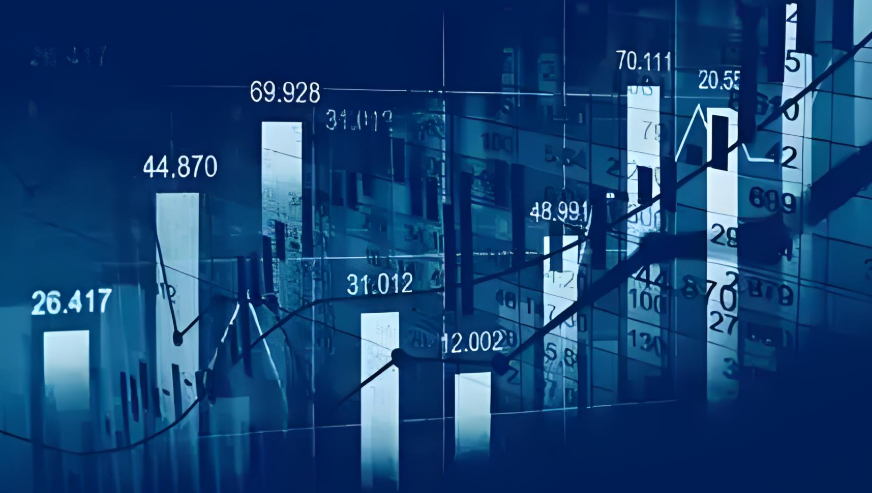Outlook for December Inflation Report in the U.S.
Advertisements
In the world of finance, few events are as closely monitored as the release of inflation reports. Tonight, the U.S. financial markets are bracing themselves for the first inflation report of the year, which arrives as a critical signal ahead of the Federal Reserve's interest rate decision scheduled for later this month. Analysts anticipate that the year-on-year inflation rate for December will reach 2.9%, up from 2.7% the previous month. If this prediction holds, it will mark the third consecutive month of rising inflation, the highest level recorded since July of the previous year. Moreover, the core inflation rate, which excludes volatile items such as food and energy prices, is expected to remain steady at 3.3%, mirroring the growth observed over the past three months. The Consumer Price Index (CPI) is anticipated to reflect a modest month-on-month increase of 0.3%.
Over the past few months, inflation data has surprised many by remaining unexpectedly high, thrusting the topic of price pressure back into the center stage of economic discussions. The recent downward trend in inflation has fallen short of the Federal Reserve's target of 2%, a stagnation that notably did not prevent the central bank from cutting interest rates last month. Nonetheless, this stagnation has played a role in shaping policymakers' expectations regarding future rate cuts. As of November, the consumer inflation rate exhibited an uptick, with the overall CPI at 2.7% and the core CPI at 3.3%. Furthermore, the overall Personal Consumption Expenditure (PCE) inflation rate stood at 2.4%, with the core PCE at 2.8%.
Economists who closely track consumer pricing suggest that rising food and energy costs are likely driving up the CPI. This scenario may hint at the lingering effects of supply chain disruptions caused by the COVID-19 pandemic earlier last year that impinged upon inflation rates. Additionally, there are widespread expectations that the incoming administration will implement economic policies, including import tariffs and measures to expel undocumented immigrants, that may further exacerbate inflation, complicating the Federal Reserve's considerations regarding rate cuts. This concern was expressed during the last interest rate verdict, with officials adjusting their inflation forecasts for 2025 and 2026 upwards.

A recent survey published by the Federal Reserve Bank of New York highlighted that American consumers harbor mixed feelings about the trajectory of expected inflation amidst growing worries about their household debt repayment capabilities. Respondents estimated that the inflation rate one year from now would stabilize at around 3%. However, the forecast for price pressures three years into the future rose from November’s 2.6% to 3%, while the five-year outlook dipped from 2.9% to 2.7%. The survey also noted a notable increase in uncertainty regarding inflation expectations over the coming one and three years, though the uncertainty surrounding the five-year outlook has decreased.
In further developments, last Friday's non-farm payroll report provided investors with a reason to further temper expectations for rate cuts. In December, U.S. employers added 256,000 new jobs—significantly higher than the revised figure of 212,000 from November and well above the expected 160,000. This ongoing robustness in the economy has amplified debates surrounding how much the Federal Reserve might relax its monetary policy. Economists from major U.S. banks have since adjusted their outlooks for further rate cuts.
Federal Reserve officials revealed in December that they would only lower the benchmark interest rate twice by 2025. Some committee members expressed the view that the deflationary process is temporarily stalled, or perceived a risk that deflation might emerge. Therefore, the forthcoming report could play a pivotal role in shaping their judgments regarding the interest rate trajectory for the year. Should inflation continue to rise, officials will undoubtedly adopt a more cautious stance on rate cuts. Currently, many institutions expect that the core inflation rate could remain above the Fed’s 2% target for most, if not all, of 2025.
Following the employment report released last Friday, the U.S. Treasury market took a hit, with notable declines in U.S. government bonds and a significant spike in yields—10-year Treasury yields nearly approached 4.8%. This shift dramatically altered market pricing, as investors pushed back their expectations for the Federal Reserve to implement its first rate cut of the year by 25 basis points, believing the likelihood of a near-term cut has diminished significantly. The inflation report set to be released tonight is of utmost importance; if it indicates that inflation remains elevated or exceeds expectations, it would further reinforce the Fed's stance on maintaining stable interest rates. This could push the timeline for the Fed's first rate cut, anticipated to be in June or later.
In such a context, the U.S. stock market may continue its trend of slowing momentum since late last year. Coupled with the ongoing earnings season, the ability of tech stocks to regain market confidence will be closely watched. Notably, gold prices and the U.S. dollar index halted their four-day streak of gains at the beginning of this week. The latest inflation report could disrupt this correlation, as the Federal Reserve's decision to temper rate cuts typically weighs on gold prices. It is worth noting that the Fed's rate-cutting pace is the slowest among major economies this year, excluding Japan, which delineates the path of divergence between the dollar and gold. Currently, technical indicators suggest a clearer upward trend for the dollar compared to gold, which remains hindered by a critical resistance level above $2,700, while dollar strength approaches a pivotal breakthrough over 110.
Leave a Reply
Your email address will not be published. Required fields are marked *